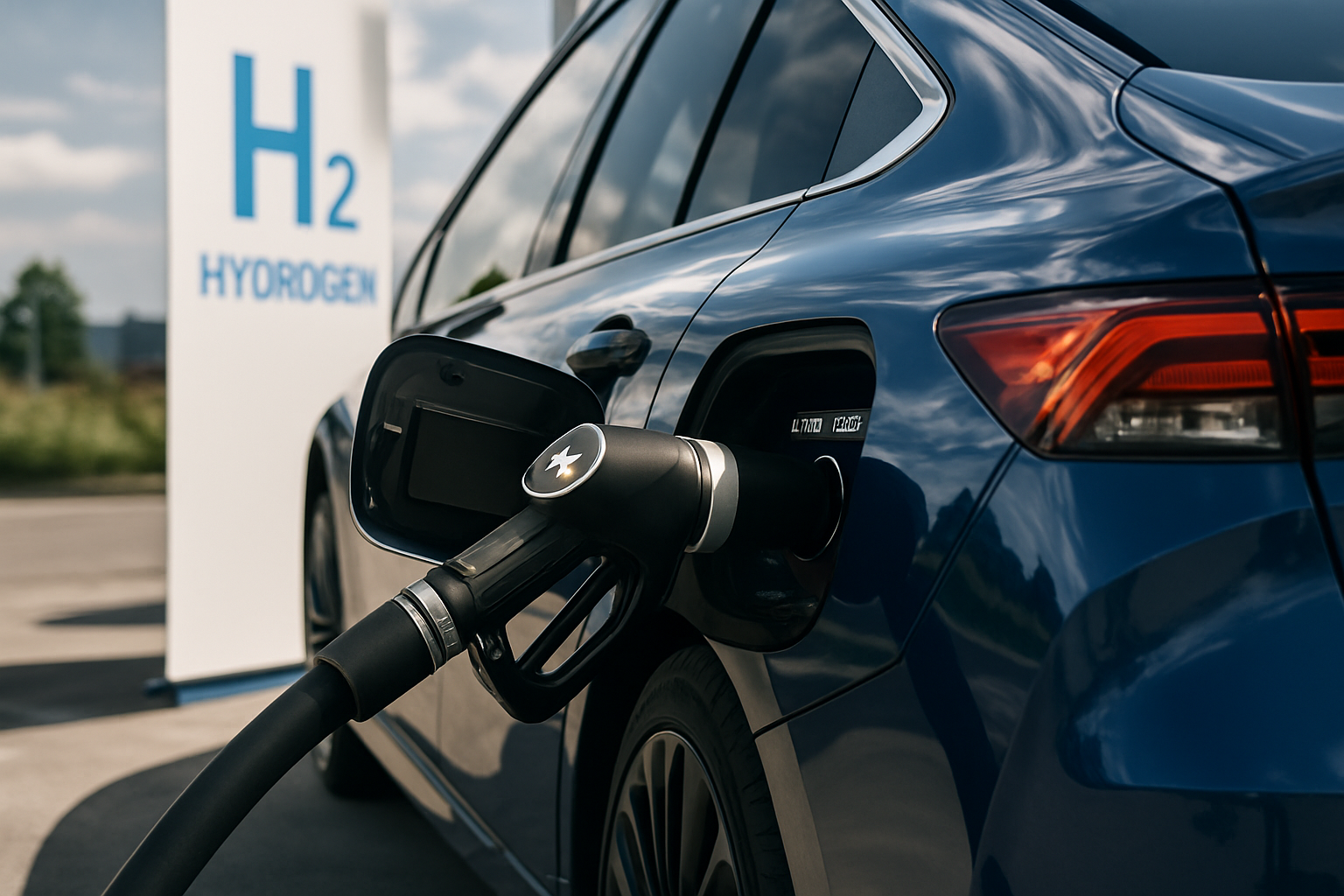Hydrogen Fuel Cell Vehicles: The Silent Revolution
Imagine cruising down the highway in a car that emits nothing but water vapor, refuels in minutes, and offers a range rivaling traditional gasoline vehicles. This isn't science fiction; it's the reality of hydrogen fuel cell vehicles (FCVs). As the automotive world grapples with environmental concerns and the search for sustainable alternatives, FCVs are emerging as a promising solution that combines the best of electric and conventional vehicles. Let's dive into the world of hydrogen-powered cars and explore why they might just be the future of transportation.

A Brief History of Hydrogen in Automotive Applications
The concept of using hydrogen as a fuel source isn’t new. In fact, it dates back to the early 19th century when Swiss inventor François Isaac de Rivaz created the first hydrogen-powered internal combustion engine. However, it wasn’t until the late 20th century that automotive manufacturers began seriously exploring hydrogen as a viable alternative to fossil fuels. The oil crisis of the 1970s sparked renewed interest, leading to increased research and development in fuel cell technology.
The Advantages of Fuel Cell Vehicles
Fuel cell vehicles offer several compelling advantages over both traditional internal combustion engines and battery electric vehicles. First and foremost is their environmental impact – or lack thereof. FCVs produce zero tailpipe emissions, with water vapor being the only byproduct of their operation. This makes them an attractive option for reducing greenhouse gas emissions and combating climate change.
Range and Refueling: Addressing the Limitations of Battery Electric Vehicles
One of the most significant advantages of FCVs over battery electric vehicles (BEVs) is their range and refueling time. While even the most advanced BEVs require hours to fully charge, hydrogen fuel cell vehicles can be refueled in a matter of minutes, much like a conventional gasoline car. Additionally, FCVs typically offer a range of 300-400 miles on a single tank of hydrogen, comparable to many gasoline-powered vehicles and surpassing the range of most current BEVs.
Infrastructure Challenges and Solutions
Despite their promising technology, FCVs face a significant hurdle: the lack of a widespread hydrogen refueling infrastructure. As of 2023, there are only a handful of hydrogen fueling stations available to the public, primarily concentrated in California and parts of Europe and Asia. However, governments and private companies are investing heavily in expanding this network. For example, Germany plans to have 400 hydrogen stations operational by 2025, while Japan aims for 1,000 stations by 2030.
The Role of FCVs in Heavy-Duty Transportation
While passenger vehicles have been the primary focus of FCV development, the technology shows even greater promise in the heavy-duty transportation sector. Long-haul trucks, buses, and even trains could benefit significantly from fuel cell technology. The high energy density of hydrogen and quick refueling times make FCVs particularly well-suited for these applications, where long range and minimal downtime are crucial.
Overcoming Production and Storage Challenges
One of the main criticisms of hydrogen as a fuel source is the energy-intensive nature of its production. Currently, most hydrogen is produced through steam methane reforming, a process that relies on natural gas and produces significant CO2 emissions. However, advancements in green hydrogen production methods, such as electrolysis powered by renewable energy, are making hydrogen an increasingly sustainable option.
The Future of Fuel Cell Technology
As research and development in fuel cell technology continue, we can expect to see significant improvements in efficiency, durability, and cost. New materials and manufacturing techniques are already reducing the amount of expensive platinum required in fuel cells, making them more economically viable. Additionally, advancements in hydrogen storage technologies, such as metal hydrides and carbon nanotubes, could revolutionize the way we store and transport this volatile gas.
FCVs and the Broader Energy Landscape
Hydrogen fuel cell vehicles are not just about transportation; they represent a crucial component of a broader hydrogen economy. As we transition towards renewable energy sources, hydrogen could play a vital role in energy storage and distribution. Excess electricity from wind or solar farms could be used to produce hydrogen through electrolysis, which can then be stored and used to generate electricity during periods of low renewable energy production.
In conclusion, hydrogen fuel cell vehicles represent a fascinating and promising technology that could revolutionize not just the automotive industry, but our entire approach to energy production and consumption. While challenges remain, the potential benefits of FCVs in terms of environmental impact, performance, and versatility make them a technology worth watching closely in the coming years. As we continue to seek sustainable solutions to our transportation needs, FCVs may well prove to be a key piece of the puzzle in creating a cleaner, more efficient future for mobility.





